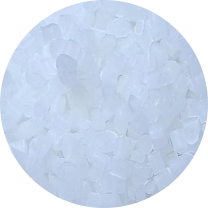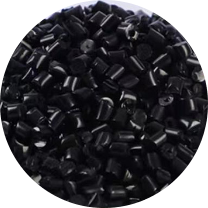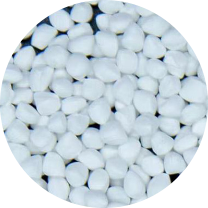Hygienic/Food Grade EVA/ABS/PET Plastic Pellets Black Masterbatch: A Comprehensive Guide
In the realm of plastic manufacturing, the demand for high-quality, hygienic, and food-grade materials is ever-increasing. Among these, black masterbatch stands out as a vital component in creating durable and aesthetically appealing products. This article delves into the significance of hygienic/food-grade EVA (Ethylene-Vinyl Acetate), ABS (Acrylonitrile Butadiene Styrene), and PET (Polyethylene Terephthalate) plastic pellets black masterbatch, exploring their applications, benefits, and production processes.
Understanding Black Masterbatch
A black masterbatch is a concentrated mixture of pigments and additives encapsulated during a heat process into a carrier resin, which is then cooled and cut into a granular shape. These pellets are later mixed with natural polymer in a precise ratio to achieve the desired color and properties in the final product. The black masterbatch is renowned for its deep, uniform color and enhanced physical properties.
Types of Plastic Pellets
EVA (Ethylene-Vinyl Acetate)
Properties: EVA is known for its excellent flexibility, toughness, and clarity. It is also resistant to stress-cracking, UV radiation, and low temperatures.
Applications: EVA is widely used in food packaging, medical devices, and footwear. Its hygienic properties make it ideal for products that require a high level of cleanliness and safety.
ABS (Acrylonitrile Butadiene Styrene)
Properties: ABS is appreciated for its strength, rigidity, and impact resistance. It also has good chemical and heat resistance.
Applications: ABS is commonly used in the manufacturing of kitchen appliances, toys, and medical equipment. Its robustness and food-grade certification make it suitable for products that come into contact with food.
PET (Polyethylene Terephthalate)
Properties: PET is favored for its excellent water and moisture barrier properties, high strength, and recyclability.
Applications: PET is predominantly used in beverage bottles, food containers, and packaging films. Its hygienic nature ensures the safety and quality of consumable products.
Benefits of Hygienic/Food Grade Black Masterbatch
Safety and Compliance: These masterbatches comply with stringent food safety regulations and standards, ensuring that the end products are safe for use in food-related applications.
Enhanced Aesthetics: The use of black masterbatch provides a uniform, deep black color that enhances the visual appeal of the final product.
Improved Performance: The additives in the masterbatch can improve various properties of the plastic, such as UV resistance, thermal stability, and mechanical strength.
Cost Efficiency: Using a masterbatch allows manufacturers to achieve the desired color and properties without investing in additional pigments and additives separately.
Production Process
Selection of Raw Materials: High-quality pigments and additives are selected based on the desired properties and applications of the final product.
Mixing and Compounding: The raw materials are mixed and heated to a specific temperature to ensure uniform dispersion of the pigments and additives in the carrier resin.
Pelletizing: The molten mixture is then cooled and cut into granular pellets.
Quality Control: The pellets undergo rigorous testing to ensure they meet the required hygienic and food-grade standards.
Hygienic/food-grade EVA, ABS, and PET plastic pellets black masterbatch are indispensable in the production of safe, durable, and aesthetically pleasing products. Their compliance with food safety regulations, combined with their enhanced physical properties, makes them a preferred choice in various industries.
prevNo previous article
nextApplication and advantages of high-density polyethylene (HDPE) film blowing white masterbatch and plastic granules


 English
English 中文简体
中文简体 한국어
한국어 عربى
عربى














